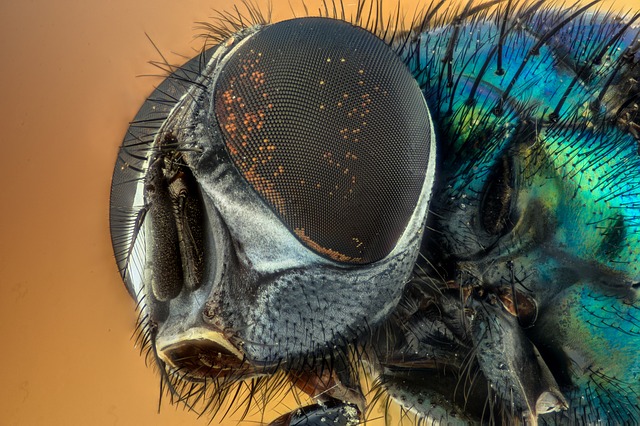Are you prepared for this summer’s flies?

By Joe Gallenti, owner of Farmer’s Mailbox. Flies are a nuisance in the Australian summer. On farms, aside from being an annoyance for workers and livestock, fly bites can irritate animals so much that production can be affected. Good farm management must include fly control.
Fly infestation is inevitable when animals are farmed intensively, but there are several aspects of farm management, if not managed properly, can greatly contribute to the problem:
- inadequate manure management
- excessive moisture levels in and around animal sheds
- failure to clean up spilled or spoiled feed or soiled straw bedding
- poor management of compost piles
- ineffective use of insecticides
- lack of understanding of fly breeding habits
- poor maintenance of buildings or services such as watering systems
There are half a dozen species of flies that can be a problem for your farm and animals. Each have specific environmental preferences and times in the year when they appear. In developing the best fly control plan for your farm you must know the species that are present in your location.
Types of flies
The false stable fly, Muscina stabulans, occurs on poultry farms from late winter until midsummer. It is most abundant in mid-spring. Females lay eggs into moist manure. The presence of this species in winter is indicative of a serious fly problem.
The lesser house fly, Fannia canicularis, is smaller and slimmer than the house fly and rests with its wings overlapping. Unlike the other flies commonly found in animal sheds, Fannia spends much of its time in flight. Development time from egg to adult is about two weeks during spring/summer when Fannia is most prolific
The house fly, Musca domestica, may be present throughout the year but is most abundant from mid-summer to early autumn, when Muscina and Fannia have virtually disappeared. Whereas Muscina prefers poultry manure, house flies can also breed successfully in compost, lawn clippings, or any decomposing vegetable matter, as well as in most animal manures. Development from egg to adult fly takes about 10-12 days under optimum conditions.
Black carrion fly, Australophyra rostrata, is a shiny black fly similar in size to the house fly that usually breeds in animal carcasses. It is most abundant in spring/summer and has a development time of about 14 days.
The bush fly, Musca vetustissima is an outdoors pest that breeds in damp cattle dung but at certain times of the year may be present in large numbers around intensive livestock facilities. Adult bush flies seek moisture from the eyes, nose etc. of people and animals.
Fly management strategies
It’s impossible to completely eradicate flies from your property but you can plan to greatly reduce their numbers.
It’s important to start taking action early in the season for flies, primarily by reducing the larval habitats that are attractive to flies. Ensure regular cleaning and mucking out of livestock pens and enclosures. Collect manures, including soiled straw or litter bedding, from enclosures such as horse stables and poultry runs. Ensure feed and other vegetable matter is not allowed to spoil or rot in the open air.
Keep barns, sheds and pasture areas clean and dry by reducing standing water and the removal of wet feed and straw.
To eradicate the adult flies once they’ve hatched requires the use of repellent sprays and fly traps around the perimeters of animal enclosures, barns and sheds. Two basic types of traps exist on the market, each designed to attract a different kind of fly. Stable flies are attracted to their traps visually. House flies are attracted to their traps by odor, which can be fairly offensive to humans.
Both types should be hung outside, away from your barn, near potential fly breeding locations. If you hang traps inside your barn, you'll actually invite flies in. Generally, traps should be hung less than four feet from the ground, but be sure to follow manufacturer's recommendations for your trap to achieve the best results. You may also want to test various sites on your property to see which locations capture the most flies.






